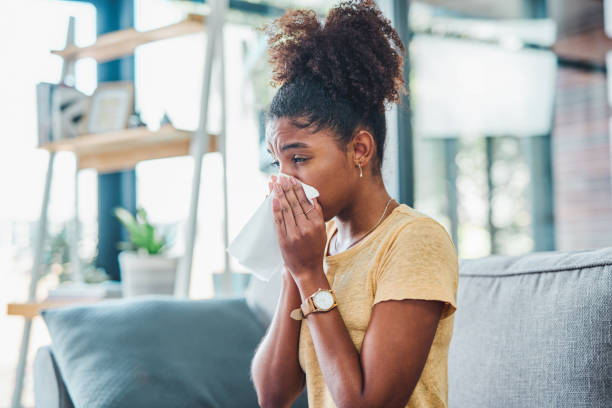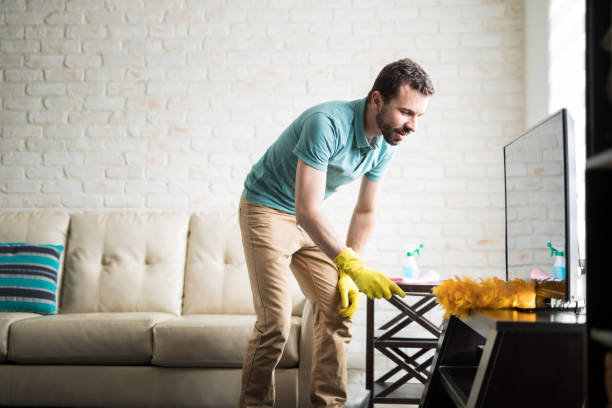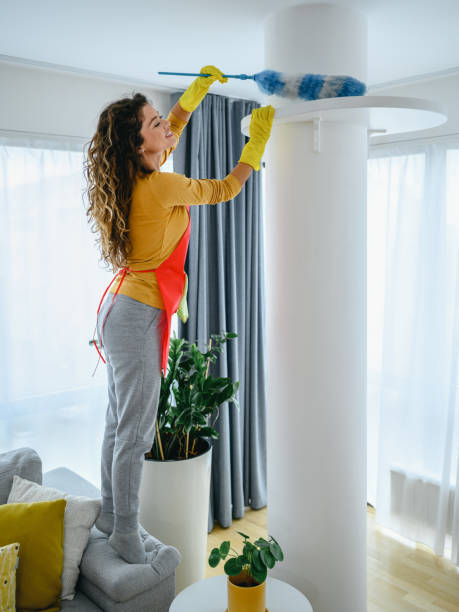Many people suffer from dust mite allergies. The house dust mite symptoms are similar to a cold, which is why the allergy is usually discovered late. Find out everything about causes, diagnosis, and how you can effectively alleviate house dust mite allergy.
We come into contact with house dust mites every day. Because they are natural and harmless roommates on our mattresses, blankets, and pillows. But some people are allergic to the feces of the animals. This can result in annoying symptoms such as a runny nose, watery eyes, etc.
What is an allergy anyway?
The term “allergy” comes from ancient Greek and means something like “foreign reaction”, i.e. excessive defensive reactions to something foreign. The body of an allergy sufferer is therefore hypersensitive to substances that come from the environment. In short, an allergy is a malfunction of the body’s immune system. As the European Center for Allergy reports, around a third of 18-79-year-old Germans are diagnosed with an allergy in the course of their lives. Women are affected much more often (35.8 percent) than men (24.1 percent). Incidentally, the latest estimates point to 30 million people affected.

Cause of house dust mite allergy
House dust is the accumulation of hair, skin flakes, textile particles, etc. that are in your home. This dust can not only be found on the floor and in the corners, but also in pillows, blankets, and mattresses. People with a house dust mite allergy react allergically to mite proteins, which are mainly found in the feces. If we come into contact with it, our immune system triggers a reaction. Then more histamine is released, which is responsible for the symptoms that occur.
Diagnosis of allergy
If you show symptoms of house dust mite allergy, you should get a clear diagnosis and see a specialist. A trained allergist or a family doctor who specializes in allergology has various diagnostic methods that can be used to determine the trigger of an allergy. Sometimes a clear diagnosis proves to be difficult, but you can only counteract the allergy with a clear determination.
There are online allergy tests so you can get a preliminary diagnosis. Consequently, these are a useful first way to classify occurring symptoms. You can use an allergy questionnaire to check initial suspicions. This is a good basis for your visit to the doctor.
Alleviate house dust mite allergy
A lack of hygiene in the household is not a trigger for an increased occurrence of house mites, as is often wrongly assumed. Nevertheless, there are a few household tricks to alleviate dust mite allergy and its symptoms. Also, read our 5 tips against house dust mites to relieve your house dust mite allergy.
1) Reduce dust mites
All measures to reduce the allergen load in the household are of great importance and usually lead to a significant reduction in symptoms. As a result, we have an overview of the most important ones for you. For more information, read our article on Dust Mites and Dust Mite Control.
- Regular and extensive ventilation throughout the house. Airing the room twice a day is recommended for allergen-free air. This reduces the humidity. The room temperature should not be too high either.
- The use of air purifiers can filter pollutants such as mite droppings from the air. Thus, they ensure better breathing air at home.
- Wear a special breathing mask when cleaning. The dust that is thrown up is very stressful for allergy sufferers, so the mask can be a good protective measure.
- Daily vacuuming (with HEPA microfilters) is helpful and particularly effective. We also recommend damp mopping afterward.
- Regular washing of bed linen and professional washing at least 60 degrees is also popular here. And at least once a year a mattress cleaning is recommended.
- Use of encasings. These covers for mattresses and bed linen are dust mite-proof covers, the costs of which are even reimbursed by some health insurance companies.
- Salt inhalers to relieve breathing difficulties or relieve asthmatic symptoms.
- Dust collectors in the entire living environment should be reduced as much as possible. Because the less house dust, the less food for the house dust mites.
2) Relieve symptoms with medication

To relieve dust mite allergy symptoms, your doctor may prescribe you antihistamines. Consequently, these should prevent the release of histamine in the body. Or they ask about glucocorticoids (cortisone) in the form of a nasal spray to decongest the nasal mucosa. In addition, note our natural home remedies for colds, effective measures against headaches, and remedies for burning eyes.
3) Hyposensitization at the allergist
You can also have a hyposensitization carried out by the doctor. This is immunotherapy in which the treating medical staff (usual allergists) inject you with the allergens of the house dust mites. The concentration is gradually increased. Consequently, your body should get used to the allergens (triggers). It is therefore an effective method to no longer suffer from the allergy in the future. Also, note our home remedies for pollen allergy and pollen count.








